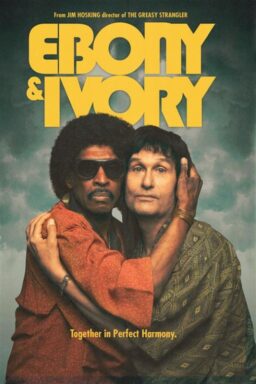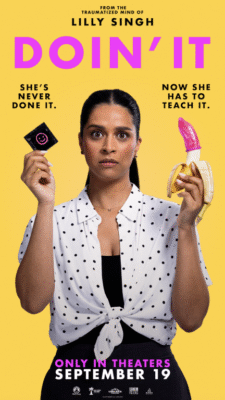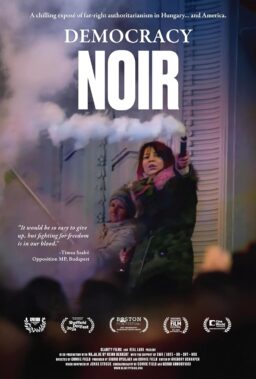Spike Lee hears that his new film, “Bamboozled,” is the center of a storm of controversy.
“I don’t think it’s even started yet, really,” he said. “But I don’t think I would call it a controversy; I would say it was a loud discussion.”
Very loud. His movie, a bitter satire of the way African-American images are marketed in the media, uses images that are deliberately offensive. Will audiences take them in the spirit Lee intended?
Lee knows something about controversy. When his great “Do the Right Thing” opened in 1989, he recalls, the writer Joe Klein predicted the film would incite blacks to riot. Instead, it was hailed as an important contribution to black-white dialogues.
“Bamboozled” is filled with troubling images, though this time both blacks and whites will share feelings of uncertainty as they watch the screen.
In the film, Damon Wayans plays a Harvard-educated black cable executive who is criticized because his shows are “too white.” Fed up, Wayans creates “Mantan The New Millennium Minstrel Show.” He expects to be fired, but the show turns into a surprise hit. It stars two homeless black street performers (Savion Glover and Tommy Davidson) wearing exaggerated blackface in a “Hee-Haw” type format, set in a watermelon patch on a plantation.
Some who have seen the film (which opens today) believe the images fly over the top of satire and are themselves offensive.
“We knew going in that this film would generate responses like this,” Lee said during a visit here last week. “There’s a range of images that can make you angry. It makes me angry. It makes me sad. It makes me try to understand how do these images come about in the first place, and what are their effects. But you don’t have to put on blackface in the 21st century to be a part of the minstrel act. It’s the new millennium, and it’s the same old stuff.”
Minstrel shows didn’t star only white actors; many blacks put on blackface. The formula was always the same: jokes based on the stupidity and laziness of blacks, performed for mostly white audiences.
What minstrel act do you see going on right now? I asked him.
“A lot of music videos. I would definitely say that they’ve evolved into a minstrel show. And a lot of shows on television.”
Any particular videos or shows?
Lee sighed. “I don’t think it does any good to say Spike Lee doesn’t like this artist or that show. But as far as the music videos go those gangsta rap videos, they talk about ‘my ho’s’ and ‘my bitches,’ and that’s a 21st century form of the minstrel show.
“I’m not saying those types of films and TV shows should not be made. I just think that shouldn’t be the only thing. We need to expand, stretch out. It’s kind of sad. Why do we always have to be relegated to the ghetto of sitcoms? I’m gonna try to do an episodic television show that’s a drama. There’s so much more than can be explored. Hopefully somebody who’s courageous at one of these networks will take a chance.”
This summer, he said, was a season of enormous success for black-themed comedy films. He cited “Scary Movie,” Martin Lawrence in “Big Momma's House,” Eddie Murphy in “Nutty Professor II: The Klumps” and his own “The Original Kings of Comedy” his highest-grossing film ever.
“It’s like they’re treating this as a big awakening in Hollywood,” Lee said. “I don’t see it like that because all the films are comedies. When you do comedy, for the most part, it’s very safe. I’m elated with the success of ‘Original Kings of Comedy,’ but when films like ‘Beloved’ and ‘Rosewood,’ films like that, that type of subject matter, when those films get people to come out, then that’s the day for true celebration. We’re not there yet. Studios are very reluctant to make those types of films.”
Lee’s idea for “Bamboozled” started with his first visits to the movies, “and watching the little TV my parents would let me watch.” He was aware that black characters were often marginalized or made into caricatures: “It’s from a lifetime of accumulating images.”
The film’s end titles play over a montage of African-American collectibles coin banks, Mammy dolls, Uncle Toms, pickaninnies. I wondered if all audience members would read these racially charged images in the spirit Lee intended.
“You cannot underestimate the intelligence of the audience,” he said. “The audiences are smarter than that; they are intelligent, and they will know exactly what it is up on the screen and why.”
I’ve talked to some people, black and white, who found the images offensive, no matter what you were saying about them.
“I understand that perfectly. My grandmother would say exactly the same thing: ‘Spike, why you bringing back this stuff? We’re trying to move ahead.’ I’m not of the belief that we’ve evolved and put all that behind us, and don’t need to dredge up all that stuff. There are Jewish people who say they don’t want to see images from Auschwitz. Other people say that stuff needs to be seen, that the world must never forget what happened in Poland and Germany. I think this is the same thing, and we need to confront it.”











